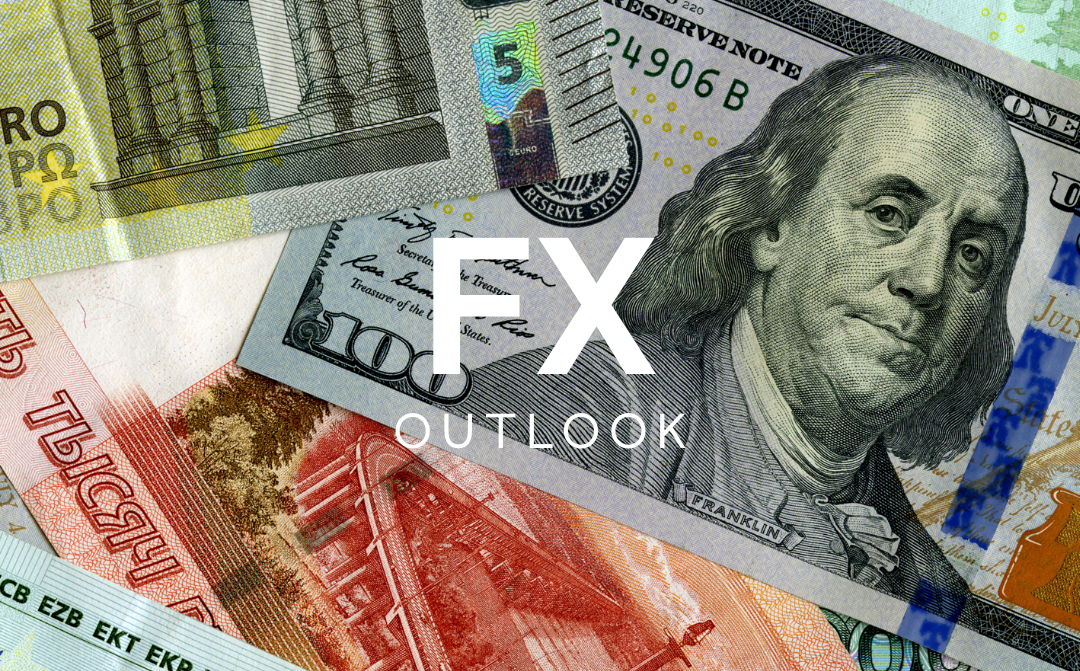FX outlook – USD, EUR, GBP, CAD, AUD, NZD

Table of Content
USD
The US dollar put up another fine performance to end the week very strongly against other major currencies as the much-anticipated inflation report influenced its price movement. This period of strength has now seen the dollar on the front-foot for four week straight. Much of that strength can be attributed to have demand, as concerning Chinese data providing the latest driver of risk-off sentiment for markets. Meanwhile, the strength of the US economy continues to embolden dollar bulls as they anticipate a higher-for-longer approach from the Fed.
Details of the latest inflation report saw headline inflation come out lower than estimates (3.2% vs 3.3%). Core CPI did move marginally lower to 4.7%, but Friday’s rise in the PPI figure reiterated that inflation may go through a short period of upside for the time being. Rather predictably, this sparked calls for rates to move higher and remain there for longer.
This week sees a relatively light economic calendar, although retail sales and industrial production figures provide particular areas of interest. With a strong consumer managing to keep the US economy growing despite soaring prices, another strong retail sales figure would highlight a continuation of that theme.
EUR
The single currency struggled for direction this week as its performance was mixed against other currencies. Subdued by a dovish ECB, data reports on economic growth around the eurozone have come out mixed, putting the Euro on a flat performance this week.
With very few economic events in the previous week, the Euro was impacted negatively by the US inflation report which triggered higher interest rates sentiments across the market.
Heading into the new week, investors will continue to digest a string of economic data emanating from the eurozone as it struggles to find growth amidst recession worries. GDP and employment change figures should provide plenty of euro volatility on Wednesday, while Fridays final CPI reading could be interesting if we see any revisions.
GBP
The pound has been attempting to push higher once again over the past week, with inflation differentials once again coming into play to boost GBP. Last week did see the US CPI and PPI gauges turn upwards, but there remains a significant gap between the inflation experiences on either side of the Atlantic.
Notably, we saw UK GDP move higher, with the June reading of 0.5% coming in well above expectations. That played a key role in shifting expectations over the longevity of this tightening period, with the Bank of England only under pressure to minimize this period of elevated rates in the event that the economy suffers. Without that economic decline, markets will expect rates to go higher-for-longer.
This week sees a significant focus on the UK given the release of the jobs (Tuesday) and inflation (Wednesday) data. On the jobs front, any signs of a strong employment market would likely benefit the pound in the same way that the GDP figure did, with markets pricing in a longer period of elevated rates from the BoE. Average earnings will be key as a proxy for inflation, with a move higher in wages bringing the potential for higher inflation, higher rates, and a higher pound. On Wednesday, UK inflation data looks set to dominate, with CPI predicted to take another significant step lower after last months 0.8% drop. Could that put pressure on the pound? It depends on whether the pace of disinflation holds greater importance over the actual rate of inflation, with UK CPI likely to remain well above its Western peers irrespective of any notable decline this month.
CAD
The Canadian dollar emerged as one of the best performers this week as it capitalized on an eight-month high for US oil prices. Energy markets do look likely to play an increasingly important role going forward, with the US looking likely to beef up its strategic reserves after a prolonged period of drawdowns. Sharp swings in US crude inventories over recent weeks continue to play into that supply/demand situation as traders attempt to gauge whether the US ‘soft-landing’ could lift the outlook for crude. The IEA certainly feels that way, projecting record demand in June. With OPEC output cuts in play, the CAD could come into strength in the event that recent crude gains persist.
On the economic-front, a thin calendar saw Canadian trade data dominate last week. June saw a second consecutive deep deficit, driven primarily by weakening export numbers. However, much of this came down to export pricing rather than export volumes, highlighting the disinflation evident over the course of recent months.
Sticking with the inflation theme, this week sees Canadian CPI released on Tuesday. Forecasts of a 0.3% monthly figure does raise concerns that we could see the country struggle to get prices down to target. With markets looking at a potential rise in the annual figure from 2.8% to 3%, the Canadian dollar could come into strength. Much like last week’s US CPI rise, it comes down to whether markets want to concentrate on the monthly shifts or focus on the long-term picture. A greater-than-expected rise in annual inflation would likely drive CAD weakness, while a figure below 3% could weaken the currency.
AUD
The Australian dollar has seen significant losses over the cause of the past week with China-related fears emanating throughout global markets. Shop declines in Chinese imports and exports served to dampen sentiment around Australian growth. The theme of China weakness has continued into this week with concerns around potential defaults in the property sector signalling further instability to come.
The recent decision from the RBA to keep interest rates steady came as a surprise for many, driving AUD sharply lower. With inflation dropping from 7% to 6%, prices are moving in the right direction which allows the RBA greater room to take their foot off the gas. The release of minutes from the last meeting, with AUD expected to be highly sensitive around any language that might indicate the end of the tightening cycle.
This week also sees a raft of Chinese data points released, with retail sales industrial production fixed asset investment, and unemployment bringing plenty of potential volatility for AUD. Also, watch out for Australian employment data released towards the back end of the week. Further signs of economic weakness could put further pressure on the RBA to draw a line under this recent phase of monetary tightening.
NZD
Weak Chinese data has similarly impacted the NZD, with weak import and export data from China unsurprisingly bringing concerns over demand for New Zealand’s products. July saw the RBNZ opt to freeze rates after 12 consecutive months of rate hikes. That helped to drive the currency lower on the prospect of an end to the period of monetary tightening.
This week sees the same China-led volatility for the NZD, with retail sales of particular note given the type of products exported to Asia by New Zealand. However, the RBNZ rate decision will provide the main event of note, with economists expecting to see the bank keep rates steady once again. A decision to do so would bring potential pressure on the New Zealand dollar, with forward-looking statements expected to play a key role in determining sentiment going forward.
Disclaimer: This material is a marketing communication and shall not in any case be construed as an investment advice, investment recommendation or presentation of an investment strategy. The marketing communication is prepared without taking into consideration the individual investors personal circumstances, investment experience or current financial situation. Any information contained therein in regardsto past performance or future forecasts does not constitute a reliable indicator of future performance, as circumstances may change over time. Scope Markets shall not accept any responsibility for any losses of investors due to the use and the content of the abovementioned information. Please note that forex trading and trading in other leveraged products involves a significant level of risk and is not suitable for all investors.







